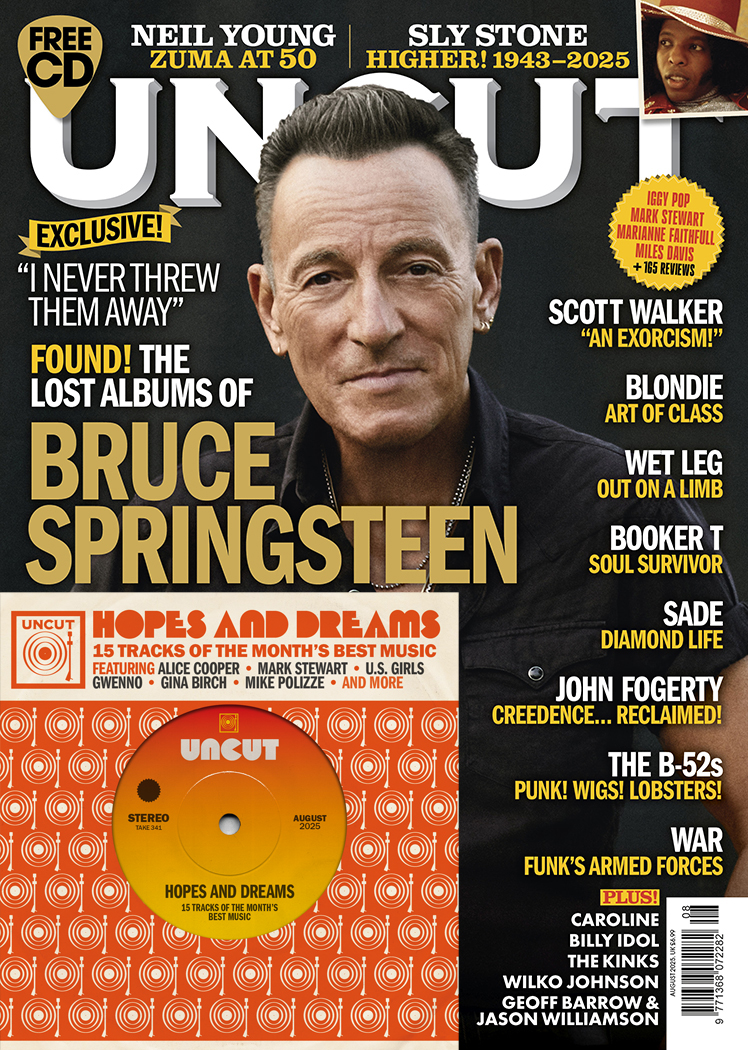Director Scott Cooper talks to Uncut about the “the trauma and ghosts” haunting his biopic, Springsteen: Deliver Me From Nowhere
Read our review of Springsteen: Deliver Me From Nowhere
Director Scott Cooper talks to Uncut about the “the trauma and ghosts” haunting his biopic, Springsteen: Deliver Me From Nowhere
“It was about honouring that particular moment”
UNCUT: What was the genesis of this project?
SCOTT COOPER: I was introduced to Warren Zane’s book Deliver Me From Nowhere. It struck me as deeply intimate and honest, and highlighted Bruce’s internal struggles in ways that I could relate to. It stood out to me as incredibly cinematic, though I knew it would be challenging, but I felt like I had to adapt it. Bruce Springsteen had said no to every overture since 1986 to make a film of his life. I flew to New Jersey, Warren and I met Bruce and Jon [Landau] one afternoon, and spent the whole day with them. And I left New Jersey with their blessing to tell this story.
You show flashbacks to Bruce’s childhood in ‘57, and then him hunkering down writing Nebraska in Colts Neck, New Jersey. Do those two periods encapsulate the heart of him?
I think so, yes. I told Bruce I saw it as something quiet and interior, about this very specific and deeply personal time in Bruce’s life, the end of ‘81 to ‘82, when he’s recording Nebraska and beginning to shape Born In The USA while facing some of the trauma and ghosts that he had carried with him since childhood, from dealing with an emotionally cold and distant father who was suffering from mental illness. It was about honouring that particular moment, the stillness, the searching and the pain that Bruce has talked about then. I thought this would give me and the audience access into Bruce Springsteen’s soul.
“The music would feel bracing and dangerous”
In that first meeting, did Bruce say what he hoped for with the film?
We had very shared sensibilities that it would not be hagiography. He told me, “The truth about yourself isn’t always pretty, and let’s not shy away from the truth.” He knew that I have a raw and uncompromising aesthetic. And I told him that outside of the creation of Nebraska, the music once we go into the Stone Pony would feel bracing and dangerous. He knew that though I wasn’t making a documentary, I wanted to hew as closely to the facts as possible. Bruce and Jon generously contributed insights as I was writing. I consulted them closely during casting, and it was wonderful having them both on-set, then showing them variations of the film as I was editing it.
Were there specific ways in which you were steered closer to the truth by that involvement?
Yeah. It would be about specifics of where Bruce was in the room when he was recording the demos. What was a day like in the life of Bruce Springsteen during such a painful time? When we’re in the Stone Pony, where would you stand on stage? What songs would you play? If I asked, “Exactly what were you wearing?”, he would bring things out of his archives, and Jeremy Allen White would wear them. And he would sing in the Stone Pony Little Richard’s “Lucille”, he would sing John Lee hooker’s “Boom Boom”, and the band in the film would learn and play them. I was striving for that type of specificity and authenticity. What type of car did you drive? What would you have been listening to? What might you have turned off on the radio? How many times per week would you drive by the old home place? And he runs out there three times a week. It’s the real Stone Pony. It’s not the same house he lived in then, because it’s been modernised, so I found an undisturbed, mid-century house that felt just like it did in 1981, with the same relationship to the water. When Bruce walked in, he said, “My God, it feels like I’m back where I was.”
“This movie is about hauntings”
What did Jeremy Allen White bring to Bruce?
Jeremy has a lived-in presence, a quiet confidence and restraint that I was searching for. He also bears a strong physical resemblance to Bruce in ‘81 and ‘82. We just changed his blue eyes to brown. And the most important things Jeremy shares with Bruce are humility and swagger. And they don’t teach swagger!
Were the musical performances created live?
Even though Jeremy’s playing and singing when you see him on camera, when he’s playing to a backing track, it was the actual track. When he’s singing “Born To Run”, we’re using the exact backing track from 1981 Cincinnati, with Jeremy’s singing and playing. And it was remarkable at times that we couldn’t tell the difference between him and Bruce. This movie is about hauntings. Bruce was haunted by his childhood in Nebraska, and a movie about the making of Nebraska needed another kind of haunting. It needed to be haunted by the voice of Bruce Springsteen. So it wasn’t a question of whether Jeremy could sing and play, because we knew that he could. It was a matter of how can I make the music at times be haunted by Bruce’s voice, the man who went through all of this, to give it an extra layer of emotion.
“Bruce came out after seeing the film crying”
How do Nebraska’s themes play out in the film?
When we see Bruce create and record the song “My Father’s House”, the most personal and haunting song on Nebraska, in the film that takes him on a journey back to his old house. It captures the emotional DNA of the film – a man searching for redemption and reconciliation and meaning, but finding silence and locked doors. And when Bruce is writing “Mansion On A Hill”, it reminds him of his father driving Bruce and his younger sister to a mansion on a hill not far from their house. Bruce said to me, “When I was writing that particular song, I thought of my father always striving for the American dream, and falling short.” So those play out hopefully in ways that illuminate Bruce’s state of mind. The film certainly gave Bruce a lot of solace. It’s exactly what he wanted to tell, not only about Nebraska, but about his relationship to his father, which he’s spoken about publicly, but never in the way you see in this film. Bruce came out after seeing the film crying, kissed me on the cheek and hugged me.
Why was Bruce so moved?
I think because we didn’t shy away from the truth. He’s seen [in the film] as a flawed man, a troubled man, a very pained man. I think to see what he’s said is the most painful time in his life recreated with such authenticity and respect moved him. And I think being able to put some distance between the movie coming out in 2025 and reliving all of that in 1982 has given him some comfort. And maybe it feels like it’s come full circle. You would have to ask Bruce, but those are the conversations that we’ve had about why the movie moved him so much. And I wasn’t interested in mythologizing him, which I think he’s thankful for. I wasn’t chasing the Boss. I was chasing a tormented man in a bedroom in Colts Neck with a four-track recorder trying to make sense of the violence and the pain inside of him. I said, “Bruce, for me, this isn’t a film about a record. It’s about a reckoning.” It’s a film about a neglected soul who’s repairing itself and understanding himself through music.
The post Making Springsteen: Deliver Me From Nowhere – “Let’s not shy away from the truth” appeared first on UNCUT.



